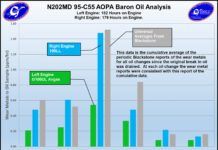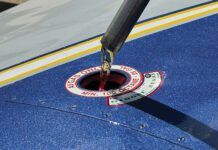We’ve been watching and reporting on the progress toward a functional unleaded replacement for 100LL avgas for nearly 30 years. Boiled down, that replacement will have to do three things: 1) meet detonation margins, 2) meet material compatibility requirements—not attack any of the components of existing aircraft fuel systems and the fuel transport and storage, and 3) meet economic realities. That is, sell for a price near that of 100LL.

The FAA and private industry have been working the replacement fuel issue for about three decades, spending millions on studies in an attempt to find a fuel that would work.
Although the economics are unproven, there are now at least two potential replacement fuels in the U.S. SwiftFuel 100SF has undergone ground testing and has done some flight testing, although not yet on an FAA-approved flight testing program.
General Aviation Modification Inc.’s G100UL is we’ll into the FAA-approved flight test program for Cirrus aircraft as we’ll as materials compatibility testing.
In early 2011, the FAA created a committee called the Unleaded Avgas Transition Aviation Rulemaking Committee (UAT ARC). It was assigned to not so much study the issue of replacing 100LL, but to devise a framework for approving fuels developed by industry. The FAA asked Congress for $60 million to fund the fuel approval framework, a process it imagines will be done within 11 years. In reality, most the work will likely be done within the next four years, at least to judge by proposed budget projection. But that’s no guarantee approved fuels will emerge before 2017, when the EPA’s new lower airborne lead standards will kick in.
A few weeks ago, Canada’s National Research Council piled on—it announced it will help the FAA with the unleaded fuel problem with research on a non-petroleum, unleaded solution.
It’s fair to wonder if the FAA really wants the distraction. Meanwhile, however plodding as it is, some of the principals in the fuel industry see the FAA’s ARC-inspired bureaucracy, AIR-20, as enough progress to at least tamp down market hysteria and for fuel developers to have a risk framework. So far, so good.
But there’s a big downside to this, too. The cost of developing and testing new fuels is staggering. The smart people at the companies doing it have to have funding for their R & D. To get it, they have to show potential investors that they are on the right track and can get the job done in a time that will allow return on the investment.
But the UAT-ARC’s worst-case timeline extends to 11 years. Even if the bulk of the work is done in half that, that’s a long time for investors to wait for a return in an uncertain market. So the UAT-ARC’s proposal is, in a sense, counter competitive because it strongly discourages small companies like Swift and GAMI from continuing to invest. It favors the status quo of large refiners and oil companies.
Isn’t there a better way? Maybe, but it’s radical. What if the FAA went to Congress, not with a budget request, but with an incentive solution? What if it asked Congress to declare a three-year moratorium on all taxes on new unleaded avgas to begin once the first unleaded replacement fuel is approved and has been delivered into an airplane wing from an FBO in the field? That would serve as an economic pump starter. Then all the FAA will have to do is look at test results, approve the certification and, not long after that, tell Congress that it’s time to start the tax moratorium and watch 100LL become a mention in the history books.
—Rick Durden




